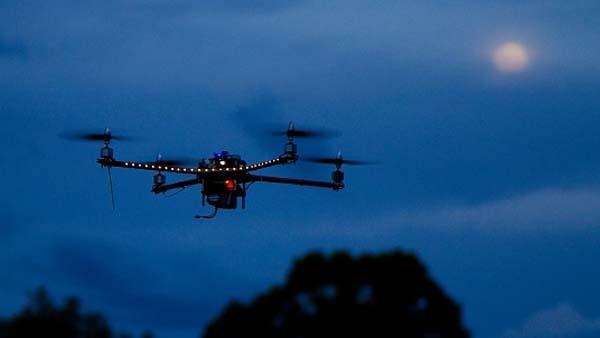
The battle of who decides where drones can and cannot be flown and what they can do when they get appears to be headed to federal court. Just to be safe, don't take any photographs along the way.
A regulatory standoff between states seeking to regulate drone use on matters such as personal privacy and the Federal Aviation Administration on use of air space has developed in large part because of bureaucratic inertia by the federal agency, and it is setting the stage for an epic battle, according to one legal publication.
For example, in July 2015, William Meredith was arrested and charged with wanton endangerment and criminal mischief when he shot John Boggs' camera-equipped drone from the skies above Bullitt County, Kentucky. Meredith claimed invasion of privacy, saying he shot down the copter, which was flying at an altitude of about 200 feet, because he said he thought it might be taking photographs or video of his daughter lounging in the back yard.
Those charges eventually were dismissed, with a Kentucky district court judge ruled Meredith was within his rights to shoot the copter from the sky with no more regard than one would have for a duck during hunting season.
That case is hardly over.
Meredith has dubbed himself the Drone Slayer and has taken to the Internet selling T-shirts depicting a drone in the crosshairs of a rifle sight. And in January, the matter recently moved on to federal court, where the plaintiff is seeking clarity on who has jurisdiction regarding drone flight. The answer to that is clear to the FAA, which says it, not the states, has the authority to regulate drone flight.
While that might be true, it has taken the FAA a long time to assert its authority, which has led to conflicts between the states and the federal government in the first place, says the National Law Review.
Congress ordered the federal agency in 2012 to begin cracking down on drone rules and regulations with the passage of the FAA Modernization and Reform Act of 2012. The act gives the FAA the authority to develop a comprehensive plan for safe use of unmanned vehicles. That plan will be rolled out in incremental phases, the first of which requires drone owners to register all unmanned aircraft between 0.55 and 55 pounds.
The U.S. Senate introduced a bill last week that would cede authority in all drone law instances to the FAA, and the agency in December issued a warning to the states not to pass any laws that are in conflict with federal rules, either in place or planned.
But a lot has happened at the state level before that warning due to the FAA's delay in acting on four-year-old legislation, according to the National Law Review.
The industry is mixed on that solution, with drone manufacturers coming down on the side of the FAA and the American Civil Liberties Union siding with the states.
Last year, 45 states introduced nearly 170 pieces of legislation addressing drone usage, including one in Arkansas that passed prohibiting all drone activity over private property. Another law on the books in North Carolina requires drone owners there to pass a test before flying a vehicle.
One of the driving forces behind the new state legislation is the increasing use of drone flights near airports. The FAA says it receives reports of drones flying near airplanes and airports every day. FAA guidelines already require drones to stay more than 5 miles away from airports and large groups of people in places such as stadiums, remain below 400 feet in altitude and be within sight of the operator at all times.

